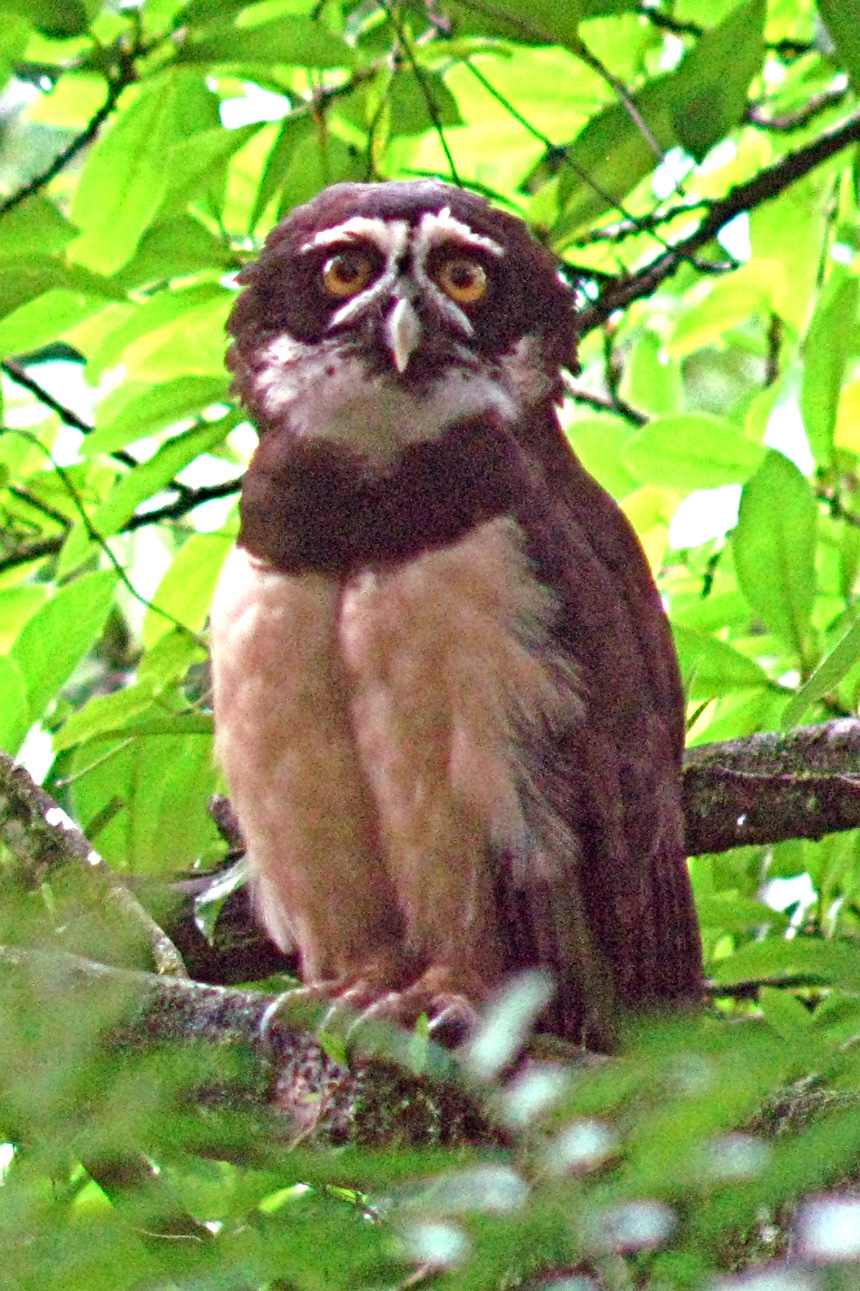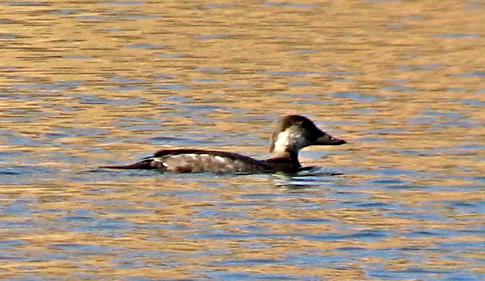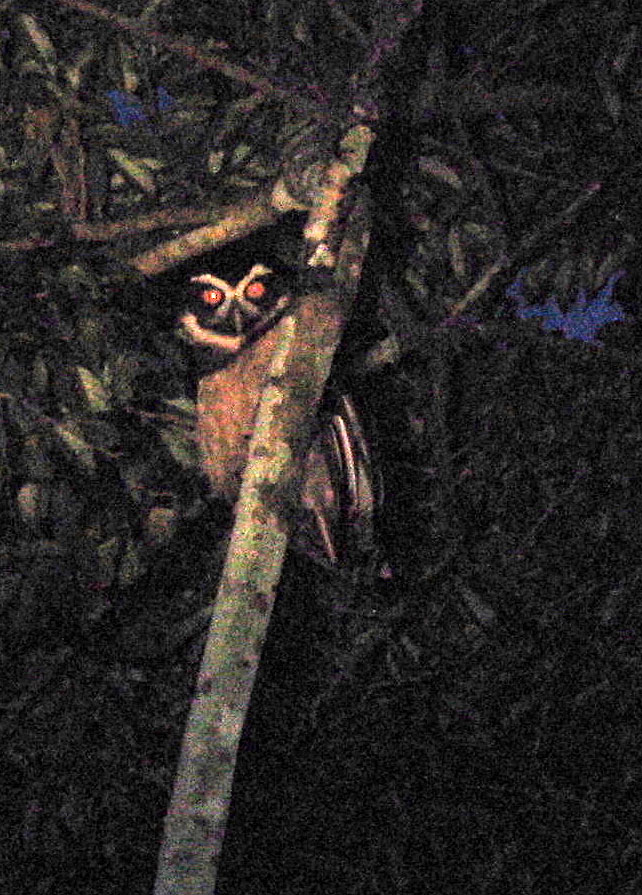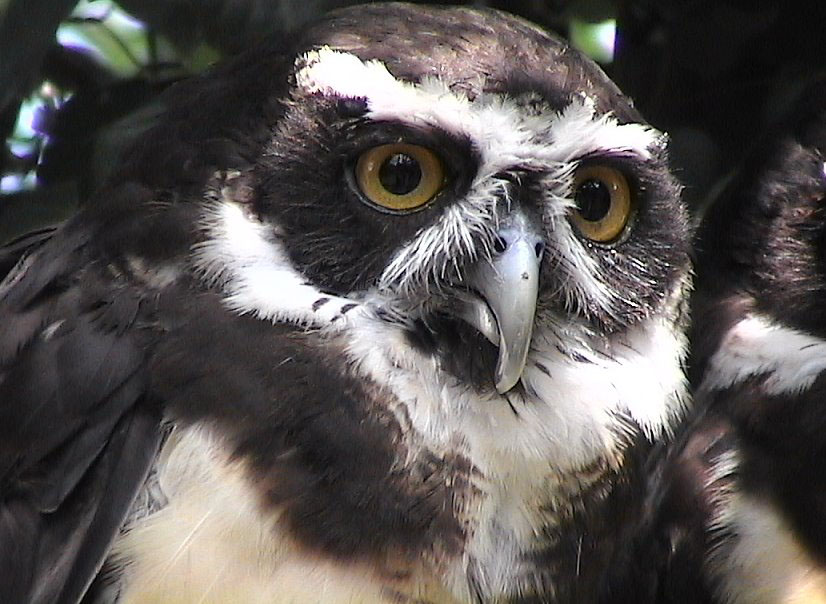(This post newly updated with better link to owl sound)
Here’s a Spectacled owl ( Pulsatrix perspicillata), staring hard at us from its perch in the tropical lowlands of Sarapiquí in Costa Rica. What could be more delightful than a cinnamon-and-cholcolate owl with white “spectacles?”
Pulsatrix perspicillata), staring hard at us from its perch in the tropical lowlands of Sarapiquí in Costa Rica. What could be more delightful than a cinnamon-and-cholcolate owl with white “spectacles?”
I have the answer: one that makes a strange, rapidly pulsating noise like a ray-gun, pwup-pwup-pwup-pwup. Click on this previous post for etymological details of its scientific name.
(Photo A.Shock)
I’m dying to make one out of clay — a jar perhaps, with a swiveling head?
In the last post on scoters, I forgot to add that there is a surprising Arizona angle to these sea ducks. Some years, one or two are found wintering or in transition on desert lakes around and about the state. They are categorized as “casual” here. This winter (Dec. ’08), there was a handful of female or immature-type Black scoters (white cheek patches) seen along the Colorado River near Parker Dam, and a White-winged scoter at Kearney Lake east of Phoenix (Jan. ’09; white cheek patches and white on the wings).
Some years, one or two are found wintering or in transition on desert lakes around and about the state. They are categorized as “casual” here. This winter (Dec. ’08), there was a handful of female or immature-type Black scoters (white cheek patches) seen along the Colorado River near Parker Dam, and a White-winged scoter at Kearney Lake east of Phoenix (Jan. ’09; white cheek patches and white on the wings).
Arizona lakes and rivers contain populations of what are locally called “mussels”, both native and non-native bottom-dwelling bivalves. Presumably these are what these wayward scoters are living on.
The bird above is a well-documented female Black scoter (Melanitta nigra), photographed at Butcher Jones Recreation Area on Saguaro Lake NE of Phoenix in October 2007. Find more info and photos at the Arizona Field Ornithologists page. If you’d like to check out the view or hike or kayak from Butcher Jones beach, here is a link with a map and other info. Saguaro Lake is an excellent place for birding and hiking Fall through Spring.
Etymology
The etymology of the word “scoter” is obscure, with no satisfactory concensus. The scoter genus, Melanitta, is a Greek compound from Gr. melas, black, and “nitta” which Choate says “appears to be a misspelling for Gr. netta, duck”. Most scoters are mostly or entirely black, so the choice is apt. The Black scoter species, nigra, is the feminine form of Latin niger, black, which makes it a black black-duck. The Surf scoter species, perspicillata, is from Latin and means “conspicuous” (like the Spectacled owl, Pulsatrix perspicillata). They should just get it over with and say “clownlike”, right?
Photo: A. Shock/Three Star Owl

This is a Spectacled Owl from the recent Veracruz trip. Spectacled owls are boldly patterned, unsociable owls of tropical forests of Central and South America. This one flew silently in to check us out from its perch high in the canopy, and suffered to have its photo snapped illuminated only by a flashlight, and no magnification. They sport an excellent Latin name: Pulsatrix perspicillata, meaning “female pulsating one” referring to its accelerating pup-pup-pup-upupup call (Pulsatrix-perspicillata-1.mp3), and “conspicuous”, referring to its striking markings.
 (Top photo A. Shock, Three Star Owl.)
(Top photo A. Shock, Three Star Owl.)
To the left is a clearer photo of what a Spectacled owl looks like in daylight, taken in the London Zoo.
 Pulsatrix perspicillata), staring hard at us from its perch in the tropical lowlands of Sarapiquí in Costa Rica. What could be more delightful than a cinnamon-and-cholcolate owl with white “spectacles?”
Pulsatrix perspicillata), staring hard at us from its perch in the tropical lowlands of Sarapiquí in Costa Rica. What could be more delightful than a cinnamon-and-cholcolate owl with white “spectacles?” 


